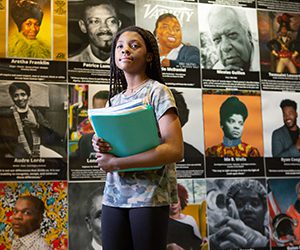It’s commencement season. As we honor the thousands of graduating students getting their diplomas, we should pause to consider those who didn’t get the opportunity to attend college, much less walk across a commencement stage — and why it is that a disproportionate number of them are Black.
It’s not for lack of interest. Black Americans know that a college degree is the most promising pathway to economic security and the middle class. Black parents also know that a higher education is becoming the minimum baseline for securing a decent job and a reliable income, and their kids know it, too: Almost 4 out of 5 Black students aspire to earn a college degree.
Yet fewer than a third of them do.
Many lack the means. Tuition has spiked in recent years, far outpacing family income. And Black families typically have 10 times less wealth, on average, than White families, so they’re far more likely to take on loans to pay for college or be priced out of higher ed entirely. But that’s where public colleges are supposed to come in. State-supported institutions educate more than 75 percent of America’s undergraduates; they also get tax exemptions and taxpayer subsidies based at least in part on the notion that an educated populace is integral to the nation’s success and that affordable access to a postsecondary education should be expanded to all residents, regardless of race.
Unfortunately, a recent report from The Education Trust — Broken Mirrors: Black Student Representation at Public State Colleges and Universities — suggests they’re failing at that mission and must do far more to ensure that Black students receive ample opportunities and support to enroll, progress, and graduate from public colleges. The report looks at how well the shares of Black undergraduates and graduates at public colleges correspond with the shares of Black residents in each of 41 states. It finds that few colleges reflect the diverse make-up of the states they’re in while exposing major racial inequities among two- and four-year public college attendees and degree earners in most states.
But don’t take our word for it. Below are the key takeaways of this report. To see how your state scored, check out our State Equity Report Card web tool.
- Black students are under-represented at public institutions, especially at four-year colleges and universities. In 37 of the 41 states we examined, the share of Black undergraduates at public four-year institutions fails to adequately reflect the state’s share of Black residents. In roughly half of the 41 states, Black students are underrepresented at community colleges.
- The vast majority of states fail to provide Black college students with the same access to selective public four-year institutions as their White peers. Black students at four-year institutions are 15 percentage points less likely to attend selective institutions than their White peers in roughly half of 36 states we analyzed for this metric.
- Nine of the 10 states with the largest enrollment disparities at selective institutions are located in the South. These nine states (Alabama, Arkansas, Florida, Georgia, Mississippi, North Carolina, South Carolina, Texas, and Virginia) are home to more than 40 percent of the nation’s Black Americans.
- Black graduates are severely under-represented among associate and bachelor’s degree earners in nearly all states. Only three of the 41 states (Utah, West Virginia, New Mexico) we examined have a share of Black bachelor’s degree earners that’s on par with their demographics. Black graduates are also underrepresented among associate degree earners in 33 of 41 states.
- Black graduates are less likely to be awarded bachelor’s degrees than their White peers and more likely to receive associate degrees or certificates. Roughly half of 41 states have double-digit gaps between the shares of Black and White graduates who are awarded a bachelor’s degree.
- The severe under-representation of Black bachelor’s degree earners is not only widespread, but some states have a very long way to go to achieve equitable representation. California, Hawaii, Michigan, Kansas, Nebraska, Ohio, South Carolina, and Wisconsin would need to more than double the number of Black students earning bachelor’s degrees to match their state demographics.
Our findings clearly show that public colleges and universities in most states are nowhere near as diverse as they should be and are anything but a mirror image of the state populations they supposedly serve. Black students are extremely underrepresented at public four-year institutions in practically every state, particularly at selective colleges, where they are virtually excluded. We mustn’t let another commencement season go by without challenging the status quo.
State leaders should take aggressive measures to enroll and graduate more Black residents, so these residents — and the nation at large — can benefit from the employment opportunities, higher earnings, and economic stability that a college degree generally affords. When residents have higher levels of degree attainment and degree holders reflect the diversity within their states, economies become more dynamic, tax revenue increases, and reliance on social safety net programs diminishes.
Leaders can start by setting goals that explicitly focus on closing racial equity gaps in degree attainment and revising their own policies and practice to improve access, affordability, and completion for Black residents who seek a college degree, rather than putting the onus on Black residents and students.
If America’s public colleges and universities are going to generate the cutting-edge, college-educated workers of tomorrow that states (and the country) need to power their economies, and fulfill their roles as engines of opportunity and social mobility, they must act now to reduce race-based inequities and mend their broken mirrors once and for all.







